Loretta Lynn
and
Conway Twitty
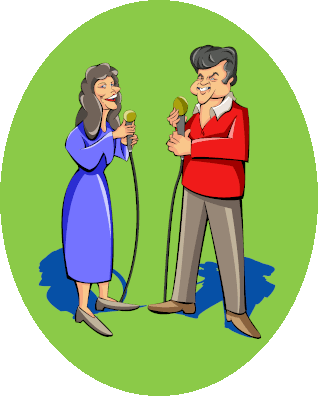
(Click to Zoom In and Out)
Everyone knows Loretta Lynn and Conway Twitty as The Two Titans of Country Music. Their duet singles and albums sold millions of copies, and they played to sold out audiences around the country. They released their first duet, "After the Fire Is Gone", in 1971, and by April it had reached #1 on Billboard's Country Chart.
But many of their fans may not be aware of a deep dark secret. No, no, no, not necessarily a BAD deep dark secret. And it strictly speaking applies to Conway, and not to Loretta.
But what is that deep dark secret? We'd really like to know that.
I though you would, as Captain Mephisto said to Sidney Brand. And that deep dark secret is ..... ?
|
Psst! Conway Twitty started out |
HA????!!!!????1
Did you say
CONWAY TWITTY
STARTED OUT
PLAYING
ROCK AND ROLL?
Footnote
"Act I, Scene II", Julius Caesar, William Shakespeare (author), Edward Blount and Isaac Jaggard (printers), 1623.
Yep. Conway Twitty started out playing Rock and Roll.
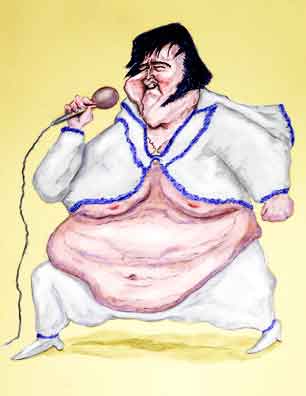
Elvis
Busting the Charts
You see, in the mid-1950's Rock and Roll had become the Big Thing. Elvis was busting the charts. In 1956, he had released "Heatbreak Hotel" which quickly hit #1 on Billboard's Pop Chart. The governor of Mississippi soon presented him with a special citation and he appeared on the now forgotten television show hosted by Tommy Dorsey with his brother Jimmy.
But it was when he sang on The Ed Sullivan Show, the really big shew that was the pinnacle of mainstream popular entertainment, that Elvis became a national sensation. Then in 1957, only a year later, came the Quintessential Elvis Movie, Jailhouse Rock. Clearly Rock and Roll was the future. Who was going to waste their time with Country and Western, even then often still called "hillbilly" music?
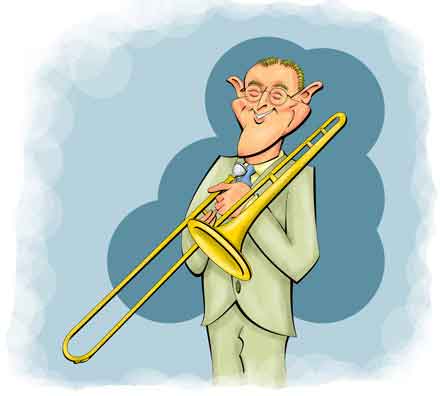
Tommy Dorsey
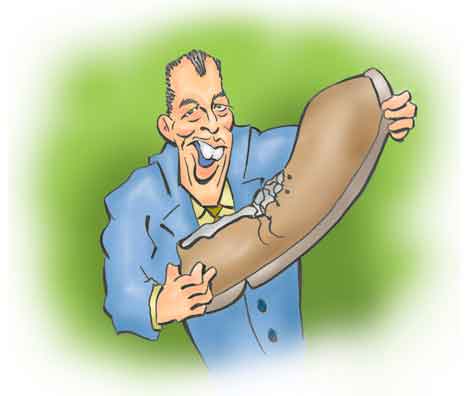
Ed Sullivan
The Really Big Shew
Music wasn't new to Conway and he had been playing and singing since he was a kid. Born in Friars Point, Mississippi, in 1933, he showed his ability early. Justly called a child prodigy, in an interview he told how he had been writing songs and was playing on the radio since he was twelve. Instead of being told by his elders not to waste his time with music, they told him they thought he could make it as a singer.
So after Conway got out of the Army and decided to abandon his alternative aspiration to be a professional baseball player, he hied off to Sun Music in Memphis to see the owner Sam Phillips. It wasn't always easy to see Sam whose able secretary, Marion Keisker, sought to shield her2 very busy boss from the hordes of aspiring rock and rollers who came banging on his door.
Still if you had talent and could get by Marion, Sam would give you a chance and let you cut a demonstration record for a few bucks. Then if Sam thought you had something, he'd give his friend Memphis disc jockey Dewey Phillips (no relation to Sam) a call. If Dewey liked the record he'd play it on his show. This was the process that launched Elvis's career with his 1954 recording of "That's All Right".
But yet3 ...
Footnote
"Act II, Scene V", Antony and Cleopatra, William Shakespeare (author), Edward Blount and Isaac Jaggard (printers), 1623.

Roy
Sun's Rising Star
Alas, the sides Conway cut for Sam sounded a bit too much like Elvis. They were never issued. But one of Sun's rising stars, Roy Orbison, decided to record one of Conway's original compositions, "Rockhouse". Naturally if Roy sang one of your songs that was certainly a step in establishing you as a bonafide musician. So began Conway's rather grueling schedule that sent him throughout the country to the high school auditoria, VFW halls, and the somewhat grandly named ballrooms that proliferated the small towns that became the staple of rock and roll singers of the 1950's.
Oh, yes. If you find one of those early Sun "Rockhouse" recordings, you won't find Conway Twitty as the composer. It will be someone parenthetically named "Jenkins". Harold Lloyd Jenkins was Conway's real name.
As a holder of bonafide rock and roll credentials, in 1957 Conway managed to schedule a session with Mercury Records. But the releases, "I Need Your Lovin'/Born To Sing The Blues" and "Shake It Up/Maybe Baby" didn't sell. Was it all up for Conway?
Nope, and it may seem odd that two unsuccessful recordings on a small label would almost immediately send Conway to a major producer. But not only did that happen but by September, 1958, his first release for MGM, "It's Only Make Believe", reached #1 on Billboard's Pop Charts. Conway's name suddenly popped up in national newspapers as the new Rockabilly sensation.
But, but, but ... What's this about Conway being a Rock and Roll singer? And yet the papers called him a Rockabilly singer?
Well, yes, and the explanation is very simple. The truth is - and pardon us if we shout -
THERE'S REALLY NO DIFFERENCE BETWEEN ROCK AND ROLL AND COUNTRY AND WESTERN MUSIC!
Yes, yes, you will find articles that attempt to distinguish between the genres. And although there are individual songs where the differences seem irreconcilable - such as "Back in the Saddle Again" and "Itsy Bitsy Teenie Weenie Yellow Polkadot Bikini" - there are many more compositions that can serve double duty.
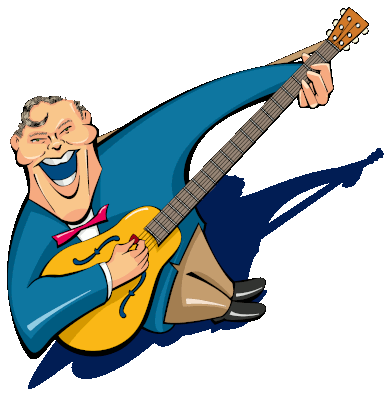
Bill Haley and the Saddlemen - ah - that's "Comets"
The truth is that the difference between Rock and Roll and Country Music, then and now, is mostly in costuming. Remember that there was a Country Music band in the early 1950's known as The Saddlemen that played around Philadelphia and they made a number of records. But even though they often kept the same tunes, when they doffed their cowboy hats, boots, and bandanas for prom coats and ties4, lo and behold!, they were suddenly Bill Haley and His Comets.
Of course, by the late 50's television was everywhere and with a #1 platter to his credit Conway hit the national broadcasts. He appeared on the Perry Como's Kraft Music Hall, The Arthur Murray Party, Upbeat, as well as The Dick Clark Beech Nut Show and its later and more famous incarnation, American Bandstand. Conway's performances were all marketed toward the teen Rock and Roll audience. So the Rockabilly designation notwithstanding, in the national collective conscience Conway was definitely a Rock and Roll star.
But - and it's a big but - despite his growing success, Conway wasn't getting rich. He made maybe $150 a week and that was enough mostly to just cover expenses. His experience was pretty par. Despite what the fans might think, unless you were a megastar you didn't get rich as a rock and roll idol and costs of the tours, far from being financed by the record companies, came directly out the performer's royalties. But Conway said it was still better money than doing menial jobs.
But all the while Conway was appearing for the pleasure of the American teenager, he was looking for a way to break away from Rock and Roll. He wanted to play the Country Music he had loved since he was a kid. He broached the idea with his manger who was dead set against it. Country Music? Pah! A dying archaism!
And although today the Country Music industry practically controls the national economy, it had in fact taken a big hit when Elvis showed up. Country musicians were performing in the small bars and clubs called "honky tonks" which were not always considered respectable. Yet such venues suited Conway. He liked playing for the smaller audiences and at least he was trying to break free from Rock and Roll.
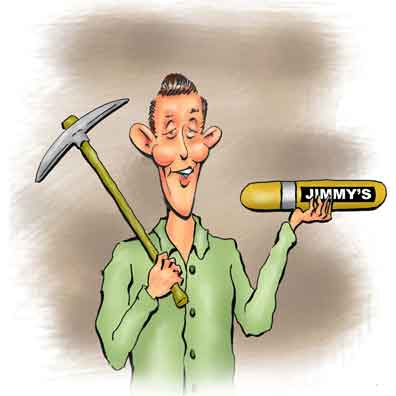
Jimmy Dean
Prime Time
Fortunately (for Conway) there were soon signs of a Country Music resurgence. As early as 1963, Jimmy Dean, who had a surprise #1 hit on both Billboard's Country Chart and it's Hot 100 List with "Big Bad John", was given his own prime time national variety show.5 Before the decade was out The Johnny Cash Show and The Glen Campbell Good Time Hour soon followed in Jimmy's wake and attracted a large and diverse audience.
Footnote
The variety show is a now largely extinct mode of television entertainment and was the electronic remnant of vaudeville. Once almost as common as the now defunct Western, variety shows featured a number of unrelated acts one after another. The idea was to have something for everyone and at a time when a household had only a single television set and everyone had to watch the shows in tandem.
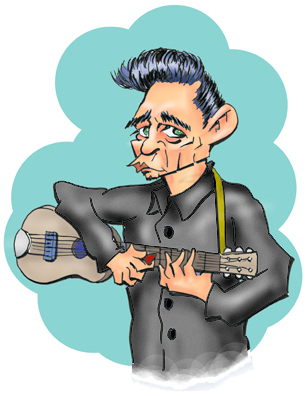
Johnny Cash
Soon to follow.
But it was in 1969 that Hee-Haw, the Country Music comedy and music show, unexpectedly emerged as a surprise hit. Although initially panned by the critics as an unsuccessful "hillbilly" imitation of the popular hippie-inspired comedy show Rowan and Martin's Laugh-In, it was so popular that when the network canceled the show, it was immediately spun off in syndication. It continued for almost thirty years and was watched by rural and city viewers alike. And a lot of Hee Haw's fans were suburbanite kids.
Suddenly Country was cool. Country was hip. So as the Swinging Sixties faded into the Substantive Seventies, Rock and Roll stars like Kenny Rogers, Leon Russell, and The Nitty Gritty Dirt Band turned Country and they never went back.6
Footnote
Probably the biggest blurring of Rock and Roll and Country music was with the group Creedence Clearwater Revival. Starting with "Proud Mary", they had a string of hits which by any definition was Country with a strong Southern sound. But when asked on American Bandstand what kind of music they played, they said it was just Rock and Roll.
Perhaps they protesteth a bit too much?
With his manager still objecting, Conway decided he'd have to do things his own way and ease out of Rock and Roll. The first step was to move to A Place In The Country even if it was a city. So he and his wife, Temple (called "Mickey" by her friends), and the kids moved to Oklahoma City.
It was a logical choice. He could tell his manager that living near the center of the country would keep travel costs down, and as they had settled in the suburb of Moore, he was close to the easily accessible Will Roger's International Airport. That way egress to his various gigs would be much simplified.
There was also lots of Country entertainment around town like the Jude and Jody Show, which although local, featured top flight country stars like Buck Owens, Wanda Jackson, and Hank Thompson. Also Conway had always had plenty of fans in OKC and they would fill the outdoor auditorium at Springlake Amusement Park when he appeared.
On the other hand actually making the transition to Country Music meant finding a crack in the Rock and Roll Wall, and Conway found it of all places in Ontario, Canada. A man named Harlan Howard had achieved some success writing Country and Western songs for Roy Acuff's music company in Nashville and was visiting his mother in Port Huron. When he saw that Conway was giving a concert, he and his wife decided to go. Harlan enjoyed the show particularly when Conway played a few of his songs.
Afterwards Harlan went backstage and introduced himself. They went back to Conway's motel and spent some time talking and singing songs. Harlan said Conway should sing Country, not Rock and Roll. Conway said he'd like to but his manager was still nixing the idea.
Later Conway visited Harlan in Nashville. They made some demonstration recordings and Harlan mentioned that he knew a Country record producer named Owen Bradley that might be able to land him a good contract. Conway said that sounded good to him.
Owen was a vice president for Decca Records in Nashville. He had produced recordings for some of Country's biggest stars, including Red Foley, Kitty Wells, Ernest Tubbs, and Patsy Cline. But one of Owen's most successful clients was Loretta Lynn.
Loretta was born in 1932 to Ted and Clare Webb in Butcher Hollow, Kentucky, about a hundred miles west of Lexington. Although you might think her name with the alliterative initials was a stage name, Loretta Webb had married Oliver Lynn (called Doolittle by his friends) in 1948.
Like Conway, Loretta showed her talent early but unlike Conway, she had never been a Rock and Roller. She had begun singing and touring on the Country circuit since the 1950's, and her songs quickly attracted the attention of the fans and musicians alike. By 1962 she was a full-time member of the Grand Old Opry and the same year she began recording for Decca. In 1967 she had her first #1 hit with "Don't Come Home A-Drinkin' (With Lovin' on Your Mind)".
That was also the year that Conway met Loretta. Conway had gone to Owen's recording studio in Nashville, somewhat picturesquely called "The Barn". Conway liked to show up early since that gave him an opportunity to meet the other musicians who had scheduled their sessions that day.
Loretta had heard of Conway, of course. And when Owen asked her if she would be interested in meeting him, she said sure. Owen then asked her to turn around.
The two formed an immediate rapport and Loretta had a great idea. If they toured together Conway's rock and roll fans would get to know her and her Country fans would get to know Conway. At first Owen was worried that the two rather headstrong performers might get too competitive, but Conway said he and Loretta always got along.
From Conway's description the tours could be quite an adventure. Sometimes even big name stars wouldn't show up for their performance - the reasons why varied considerably - and the audience would often express their disapproval to the other performers. And if an audience liked the singers, sometimes they wouldn't let them off the stage, which naturally chaffed the performers who were waiting to perform.
It was inevitable that Loretta and Conway would start singing together and among their twelve duet albums, eight landed in the Billboard's Top Ten Country Charts and four made it to #1. Of the singles released five reached #1 and eight more - all of the rest - were in the Top 10. Their last album was released in 1988
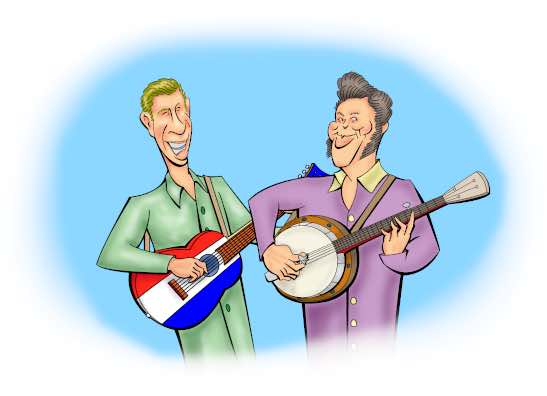
Buck Owens and Roy Clark
and

Of course, both Loretta and Conway appeared on Hee Haw along with the stars Buck Owens and Roy Clark. Conway was on the show nine times from 1969 to 1990. Loretta also appeared in the same time span for a whopping 26 appearances. In fact, Loretta and Charlie Pride were the guest artists on the first show and Loretta sang the second song ever performed on the series.
And the first? Well, for those who still question whether Rock and Roll and Country are really one and the same, they can do no better than tune in to that first episode. The first song ever sung on Hee Haw - and by Buck Owens no less - was the Chuck Berry Rock and Roll classic "Johnny B. Goode".
References and Further Reading
The Conway Twitty Story: An Authorized Biography, Wilbur Cross and Michael Kosser, PaperJacks, 1987.
Loretta Lynn: Coal Miner's Daughter, Loretta Lynn with George Vecsey, Warner, 1976.
"Rock & Roll Memories: Conway Twitty: The Early Rocking Years", Pipestone [Minnesota] County Star, December 4, 2021.
"Meet the Disc Jockeys: Country Music's Ambassadors", The [Washington, D. C.] Sunday Star, April 21, 1957, p. 91.
"Conway Twitty", Sun Records.
"Conway Twitty Concert Setlists & Tour Dates", SetList FM.
"Conway Twitty's Concert History", Concert Archives.
"Conway Twitty", Travel OK.
"Conway Twitty Discography", Discogs.
"Conway Twitty", Discography of American Historical Recordings, University of California, Santa Barbara.
"Loretta Lynn Discography", Discogs.
"Loretta Lynn and Conway Twitty Discography", Discogs.
"Elvis Presley's First Recording Session", Susan Doll, How Stuff Works.
Hee Haw, Internet Movie Data Base.